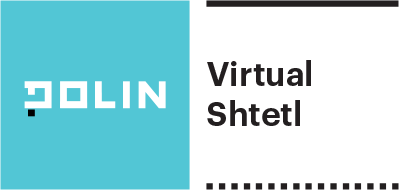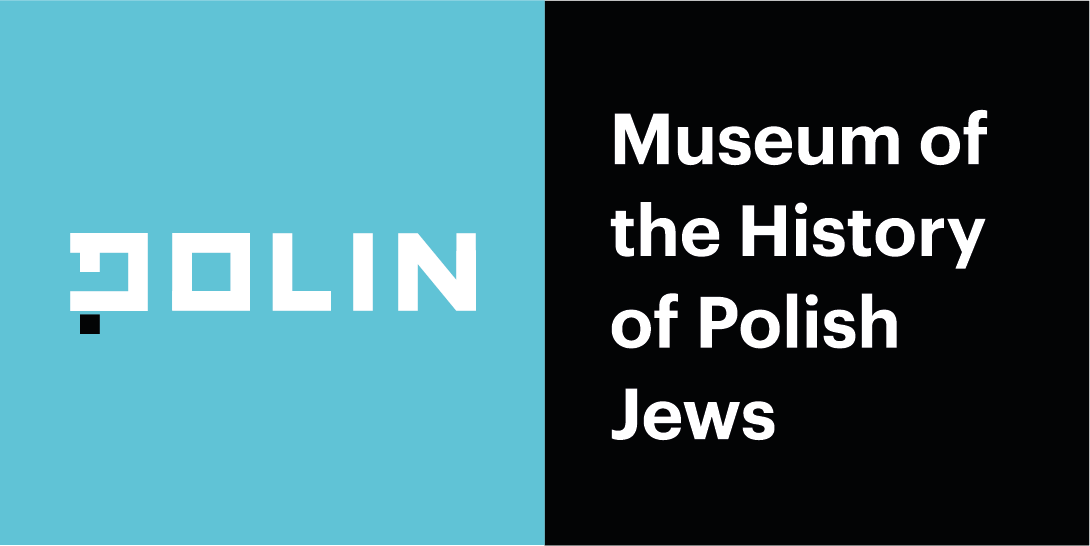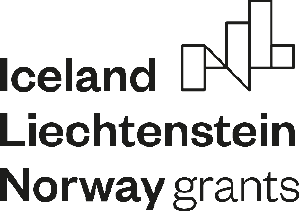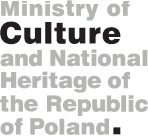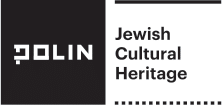Rozensztrauch (Rozenstrauch) Zofia (Judkowski Naomi) (29 March 1917, Warsaw – 5 December 1996, Kibbutz Lohamei HaGeta'ot) – architect and painter.
She was born as the daughter of Justyna Ita née Kuperwajs (1889 Warsaw – 1943 Majdanek) and Michał Wolf Rozensztrauch (1885 Galicia – 1943 Majdanek). Her father ran a woollen goods manufactory in Warsaw. She also had older siblings, sister Felicja (? – 1943 Majdanek) and brother Icchak (Ignacy) (1914 Warsaw – 1943 ?).
Initially, the family was well-off and the children attended good schools. In 1926, the Rozensztrauchs decided to go to Palestine. They invested in a dairy in Tel Aviv. However, the products did not sell as expected; the investment was a failure. The Rozensztrauch family returned to Poland and rebuilt their life in Warsaw.
After graduating from school in 1935, Zofia was admitted to the Faculty of Architecture at the Warsaw University of Technology. She recalled that out of 70 students, she was one of 5 people of Jewish origin who were admitted.
The outbreak of the Second World War prevented her from continuing her studies, shattering the life she led before. After the Germans created the ghetto in Warsaw, it turned out that the Rozensztrauchs' flat was within its boundaries, so they did not have to move. However, like many other families, the Rozensztrauchs had to find a livelihood. At first, they would sell their belongings. Zofia earned money by creating graphics for a sweets factory, then she found work in a pharmacy as a cleaner and cashier. The Rozensztrauchs survived the "Great Action" of deportation in the summer of 1942.
In the autumn of 1942, all those who still had some means or stayed connected with people on the other side of the wall tried to escape the ghetto in order to hide on the so-called Aryan side. In her post-war memoirs, Zofia recalls the atmosphere among the people in the residual ghetto at the end of 1942:
There was no longer anyone willing to volunteer to "go east", as there had been during the first action. No one was deluded this time, no one was deceived by illusory promises of "work in Ukraine". Even the panicky, maddening fear that accompanied the period of the first action has given way to a kind of gallows humour. People said goodbye with the words: "we'll meet on the shelf at the soapmaker's as R.I.F. (Rein Jidische Fett) [Rein jüdisches Fett – author's note], I advise you to drink cologne so you'll be toilet soap"[1.1].
In the autumn, the resistance movement in the ghetto began the bunker building project to have somewhere to hide during subsequent deportations. Thanks to the skills she acquired at university, Zofia would help design underground shelters (such as the bunker under the Nalewki 33 and 36 tenement houses).
People were building bunkers! They were most imaginative. Most were located in basements with bricked-up windows and entrances. Sometimes below the concrete cover of the courtyard. One would enter such a bunker through an oven, hob, sink, toilet bowl or gas meter recess of a ground-floor flat. Sometimes a stack of barrels, one of which had a movable bottom, served as an entrance. Inside the bunker, "all comforts" were installed: electricity, running water, sanitation, beds, food alcoves. One bunker was usually built by several families working together. Each bunker had its commandant, its external guard, selected in advance. In the evening, a quiet tapping could be heard coming from underground. People were building bunkers![1.1.1].
Following the deportation action in January 1943, after which about 50,000 people remained in the ghetto, the survivors lived clustered in sheds/workshops (e.g. Schultz's shop on Leszno and Nowolipie Streets, Oschmann-Leszczyński's on Nowolipki Street, Toebbens' on Prosta and Leszno Street, Schilling's on Nowolipie Street, brushmakers' on Świętojerska Street). The people had "numbers", they were assigned to their workshops. The ghetto also housed "savages" – those without numbers. They lived in hiding, feeding on whatever they could find. Zofia Rozensztrauch was employed at the Rüstungskommando-Fabrik Hermann Bauer factory located in the Nalewki 28/30 tenement houses; she lived there with her parents and sister Felicia. The fate of Zofia's older brother, Icchak (Ignacy), is unknown; he was most likely murdered in 1943.
Shop prisoners learned of the Germans' plan to liquidate the ghetto on 19 April the day before. On the evening of 18 April, members of the Jewish Combat Organisation (ŻOB) called for resistance:
They spoke of the upcoming final liquidation and extermination. They beseeched people not to volunteer to go. Those who have a revolver – let them defend themselves; those who are defenceless – let them hide in bunkers, let them resist passively. They did not hide how difficult and hopeless the situation was, but there was only one thing they asked for: let there be no repeat of July 1942 when half a million people went to slaughter willingly like lambs.[1.2]
This is how Zofia Rozensztrauch recalled the beginning of the fights in the ghetto in 1947:
I survived 1939 – the siege of Warsaw. It was worse now. We were saying among ourselves that Germans probably set out for London with less forces than to capture those few miserable houses: on Nalewki, Miła, Zamenhofa Streets..."[1.1.2]
In accordance with the plea of ŻOB, Zofia's family and most of those employed in the shop went down to the bunker. After a while, when the Germans started to set fire to the houses, the building on Nalewki Street where they were hiding also burst into flames.
I don't know if they all managed to escape. I can't, I don't know how to describe the group of people struggling to escape the sea of flames into which the house at 36 Nalewki Street turned in a few moments. Ba, if only our house! As far as the eye can see: Nalewki, Gęsia, Miła, Zamenhofa and beyond – everything on fire![1.1.2].
They managed to make their way to a larger bunker in a neighbouring building, where approximately 1,000 people found refuge. After a few days, the Germans dragged them out of there and herded them to Umschlagplatz, from where the Rozensztrauch family was deported to the Majdanek camp. There the Germans murdered her parents, Ita and Michał Wolf, and Zofia's sister Felicja.
Zofia was sent to the German Nazi camp Auschwitz, initially to Block 27. Later, because of her skills (technical drawing), she was selected for Block 4, a group involved in copying plans of Auschwitz for the German archive. The drafters worked under the supervision of a German professor sent to Auschwitz for underground activities. The group managed to make additional copies of the camp plans and hide them underground. They were found after the war and some of them went to Kibbutz Lohamei HaGeta'ot, among other places. Thanks to her job, Zofia was able to help other prisoners; she obtained medicine and food, saving the life of a young French girl, Simone Jacob, later Simone Veil – lawyer, activist, and President of the European Parliament.
With Soviet troops approaching, the Germans ordered the Auschwitz prisoners to be led west. Zofia escaped the death march and hid with a group of female prisoners in the countryside. There she lived to see liberation.
She returned to Warsaw, where she began working for the Jewish Committee. In her spare time, she began to put her memories of Auschwitz onto paper, which resulted in paintings in watercolour and ink, measuring 20 x 30 cm, signed with the camp number tattooed on her forearm – 48035. These images later became evidence in the trial of Adolf Eichmann in Israel.
Rozensztrauch was active in the community of surviving Jewish artists – she became secretary of the resurrected Jewish Society for the Promotion of Fine Arts. Together with Dawid Opoczyński and Mojżesz Lubjański, she worked on an exhibition in the Jewish barracks at the Majdanek camp, and later with Chaim Hanft on the Jewish exhibition at Auschwitz-Birkenau. She thought about going back to university, she applied for resumption of studies at the Faculty of Architecture and was accepted. In a letter to a friend she wrote at that time: "I can't concentrate – I just don't have the patience"[1.3]. Ultimately, she did not go back to university
She planned to join her family in Argentina. While waiting for the necessary visas, she met Boria (Baruch) Judkowski, a Dror activist who survived the Holocaust; she travelled with him via France to Palestine. They arrived in Haifa in April 1948 – a month before Israel's declaration of independence. Initially, they settled in Kibbutz Yagur near Haifa and later moved north, where they co-created the Kibbutz of the Ghetto Fighters (Lohamei HaGeta'ot). Zofia changed her name and surname – then, as Naomi Judkowski, she graduated from the Institute of Technology in Haifa. Over the years, she worked for the kibbutz – inter alia, she designed buildings and interiors and also painted.
In 1990, she published her memoirs in Hebrew Rekwiem le-sztej miszpachot, and an English version translated by Leon Komar – Requiem for two families – was also published in the same year. She died in Kibbutz Lohamei HaGeta'ot on 5 December 1996.
Text based on an account given by Naomi Yudkowsky (originally Zofia Rozensztrauch) as part of the "Polish Roots in Israel" project.
- [1.1] Rozenstrauch Z., Historia czterech miesięcy. Świadectwo jednej z tych, co przeżyli, "Nasze Słowo" of 19 April 1947, p. 21.
- [1.1.1] Rozenstrauch Z., Historia czterech miesięcy. Świadectwo jednej z tych, co przeżyli, "Nasze Słowo" of 19 April 1947, p. 21.
- [1.2] Rozenstrauch Z., Historia czterech miesięcy. Świadectwo jednej z tych, co przeżyli, "Nasze Słowo" of 19 April 1947, p. 22.
- [1.1.2] [a] [b] Rozenstrauch Z., Historia czterech miesięcy. Świadectwo jednej z tych, co przeżyli, "Nasze Słowo" of 19 April 1947, p. 22.
- [1.3] Letter to Leon Komar of 23 June 1946, Yudkowski Naomi – Letters to Leon Komar, Catalog No 242, Registry No 03717R”M, Ghetto Fighters House Archives

